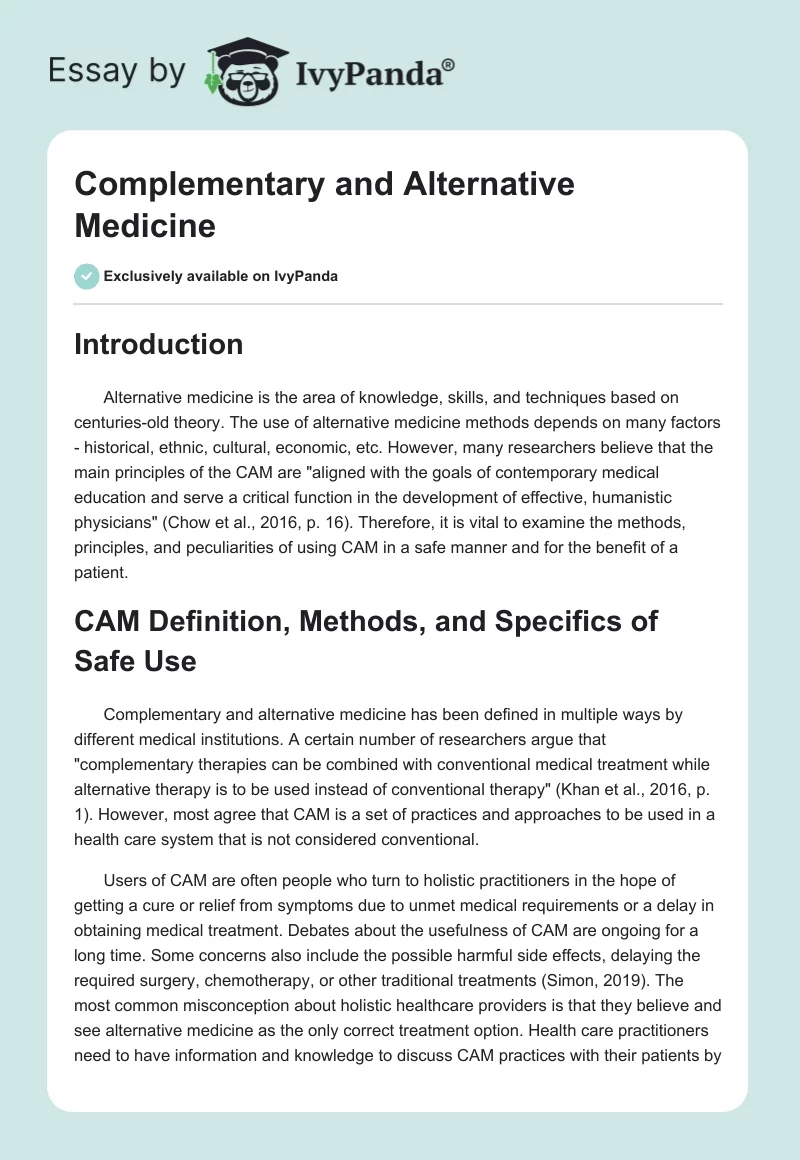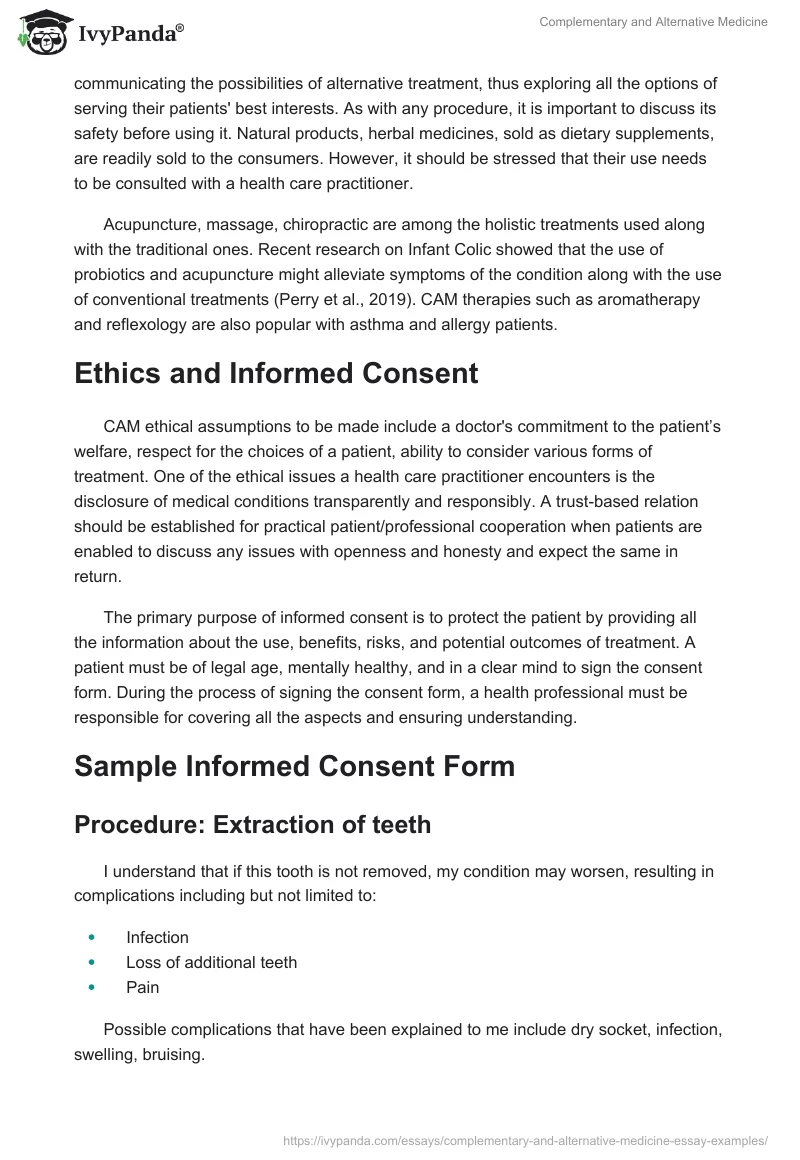Introduction
Alternative medicine is the area of knowledge, skills, and techniques based on centuries-old theory. The use of alternative medicine methods depends on many factors – historical, ethnic, cultural, economic, etc. However, many researchers believe that the main principles of the CAM are “aligned with the goals of contemporary medical education and serve a critical function in the development of effective, humanistic physicians” (Chow et al., 2016, p. 16). Therefore, it is vital to examine the methods, principles, and peculiarities of using CAM in a safe manner and for the benefit of a patient.
CAM Definition, Methods, and Specifics of Safe Use
Complementary and alternative medicine has been defined in multiple ways by different medical institutions. A certain number of researchers argue that “complementary therapies can be combined with conventional medical treatment while alternative therapy is to be used instead of conventional therapy” (Khan et al., 2016, p. 1). However, most agree that CAM is a set of practices and approaches to be used in a health care system that is not considered conventional.
Users of CAM are often people who turn to holistic practitioners in the hope of getting a cure or relief from symptoms due to unmet medical requirements or a delay in obtaining medical treatment. Debates about the usefulness of CAM are ongoing for a long time. Some concerns also include the possible harmful side effects, delaying the required surgery, chemotherapy, or other traditional treatments (Simon, 2019). The most common misconception about holistic healthcare providers is that they believe and see alternative medicine as the only correct treatment option. Health care practitioners need to have information and knowledge to discuss CAM practices with their patients by communicating the possibilities of alternative treatment, thus exploring all the options of serving their patients’ best interests. As with any procedure, it is important to discuss its safety before using it. Natural products, herbal medicines, sold as dietary supplements, are readily sold to the consumers. However, it should be stressed that their use needs to be consulted with a health care practitioner.
Acupuncture, massage, chiropractic are among the holistic treatments used along with the traditional ones. Recent research on Infant Colic showed that the use of probiotics and acupuncture might alleviate symptoms of the condition along with the use of conventional treatments (Perry et al., 2019). CAM therapies such as aromatherapy and reflexology are also popular with asthma and allergy patients.
Ethics and Informed Consent
CAM ethical assumptions to be made include a doctor’s commitment to the patient’s welfare, respect for the choices of a patient, ability to consider various forms of treatment. One of the ethical issues a health care practitioner encounters is the disclosure of medical conditions transparently and responsibly. A trust-based relation should be established for practical patient/professional cooperation when patients are enabled to discuss any issues with openness and honesty and expect the same in return.
The primary purpose of informed consent is to protect the patient by providing all the information about the use, benefits, risks, and potential outcomes of treatment. A patient must be of legal age, mentally healthy, and in a clear mind to sign the consent form. During the process of signing the consent form, a health professional must be responsible for covering all the aspects and ensuring understanding.
Sample Informed Consent Form
Procedure: Extraction of teeth
I understand that if this tooth is not removed, my condition may worsen, resulting in complications including but not limited to:
- Infection
- Loss of additional teeth
- Pain
Possible complications that have been explained to me include dry socket, infection, swelling, bruising.
I had the opportunity to discuss this surgery with the doctor and fully consent to the surgery as described.
- Patient, Parent, or Guardian
- Date
- Doctor
- Witness
References
Chow, G., Liou, K. T., & Heffron, R. C. (2016). Making whole: Applying the principles of integrative medicine in medical education. Rhode Island Medical Journal 99(3), 16-19.
Khan, M. U., Jamshed, S. Q., Ahmad, A., Bidin, M. A., Siddiqui, M. J., & Al-Shami, A. K. (2016). Use of complementary and alternative medicine among osteoarthritic patients: a review. Journal of Clinical and Diagnostic Research 10(2), 1-6.
Perry, R., Leach, V., Penfold, C., & Davies, P. (2019). An overview of systematic reviews of complementary and alternative therapies for infantile colic. Systematic Reviews 8(271).
Simon, S. (2019). The truth about alternative medical treatments. American Cancer Society.


